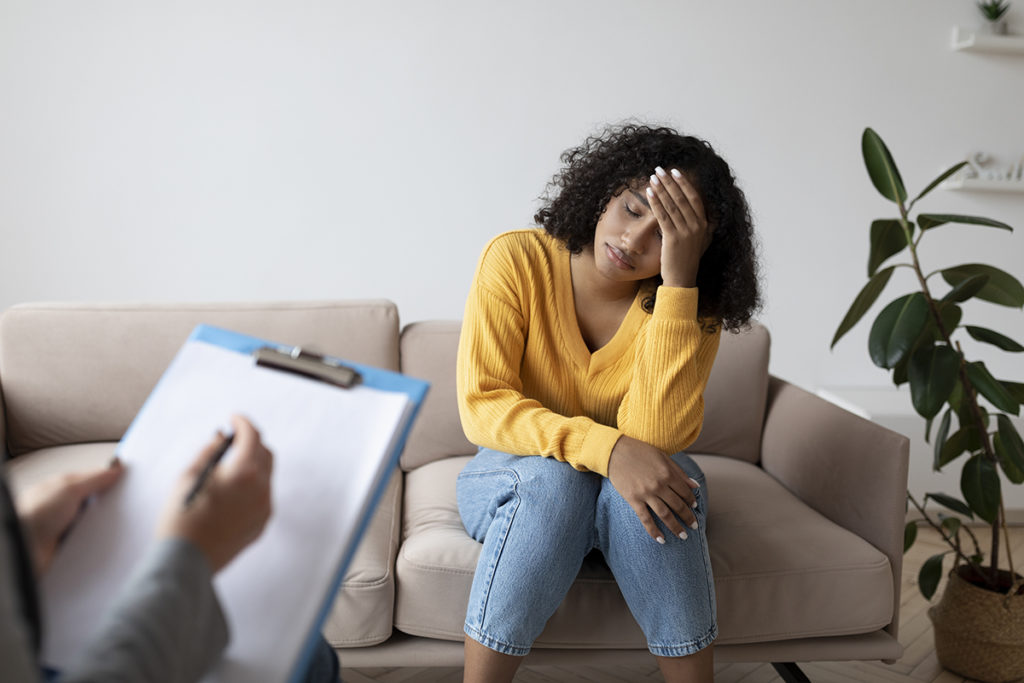Post-Traumatic Stress Disorder (PTSD) affects about 12 million people at any given time each year. Not everyone who experiences a traumatic event will develop PTSD as people react to trauma in their way. Those who do tend to develop PTSD are those who are unable to recover from the natural feelings of fear experienced during and after a traumatic situation. Learn how to help someone with PTSD. If you notice a PTSD symptom it is recommended to seek PTSD treatment.
What is PTSD?
Post traumatic stress disorder (PTSD) usually develops after a person encounters a terrifying, traumatic event. War veterans and those involved in violent crime or accidents are some of the people who may develop the disorder. Women are more than twice as likely to develop PTSD than men, and anyone of any age can develop PTSD, even young children.
The Fight-or-Flight Response
When faced with trauma, the natural inclination is to fight the danger or flee from it. This is called the “fight-or-flight” response. Most people naturally recover from traumatic events over time, but many experience symptoms like anxiety, nightmares, or flashbacks long after the danger have passed.
Suppose symptoms continue over a month or more. In that case, doctors may diagnose PTSD – although some mental health professionals may diagnose PTSD as early as a month after a traumatic event and as long as a year post-trauma.
What is Trauma?
PTSD evolves from either psychological trauma, physical trauma, or a combination of both. Everyone has a unique reaction since traumatic events affect people differently. Trauma can happen during a one-time event like a car accident, a violent family death, or an ongoing event like sexual abuse.
Ongoing Trauma
Ongoing trauma creates challenges that can interfere with healing, such as safety issues, feeling like the trauma will never end, or substance and alcohol abuse. Often, ongoing trauma isn’t recognized as families don’t know how to recognize it or the symptoms of PTSD that evolve from it.
For some people living with PTSD, family and friends choose not to address the challenges because it has been happening so long that it seems normal or because it would open Pandora’s box that they don’t feel that they can deal with at that time.
Diagnosing PTSD requires specific criteria to be met over certain amounts of time. Identifying symptoms and learning to help someone with PTSD can be more difficult.
How Medical and Mental Health Professionals Identify PTSD
There are five criteria that mental health professionals and physicians use to help them diagnose PTSD. However, it is important to remember that everyone’s mental health and response to a traumatic event can differ.
According to the PTSD Fact Sheet from the DSM-5®, one or more of the following criteria must be met:
Criterion A: Direct exposure to bodily harm, such as “actual or threatened death, serious injury or sexual violation.” This exposure may happen either by directly experiencing the traumatic event or witnessing it or if an accidental or violent event occurred to family or close friends. Less common triggers are natural disasters or terrorist attacks.
Repeated or extreme exposure to the details of the trauma can also trigger the following behavioral criteria that impair social interaction, work, or other activities of daily living:
Criterion B: Intrusive thoughts or “re-experiencing” are spontaneous memories, dreams, nightmares, or “flashbacks” to the traumatic event.
Criterion C: Avoidance of anything distressing (memories, intrusive thoughts) related to the traumatic event. This includes any external reminders of the event.
Criterion D: Persistent negative, distorted cognitions (thoughts) and moods that inflate self-blame or the blaming of others for the event.
Criterion E: Behavior marked by the fight-or-flight response to trauma – usually self-destructive, aggressive, or particularly reckless actions. Being unable to get restorative sleep and hypervigilance further arouses reactive behaviors that emphasize the need to either fight or flee.
How Family and Friends Can Identify Symptoms of PTSD
Every person’s PTSD symptoms are unique to mental health and traumatic experience. They may exhibit just one, or they may show many signs over time:
- They may socially withdraw or avoid gatherings they used to enjoy.
- They may seem on edge, always “on guard,” or extra protective of themselves, their family, or friends.
- They may exhibit physical ailments, tiredness, unusual sadness, fear, or anger that sometimes seems to come out of nowhere.
- They may experience nightmares and other sleep disturbances, often waking up panicked or unable to snap out of a disturbing dream.
- They may experience flashbacks.
- They may let on that they feel guilty for the traumatic event, disassociate themselves, or feel numb because of it.
- They may lose themselves in their work – staying extra busy, so they won’t have to think of the trauma they experienced.
- They may become depressed or experience levels of anxiety that don’t go away over time.
- They may begin to use drugs or alcohol to mask or deal with their PTSD symptoms.
- They may talk about or attempt suicide.
Family and friends who witness mild to extreme PTSD symptoms often feel lost about how to support their friend or loved one. If there is concern that someone has symptoms of PTSD, encourage them to talk with their doctor or mental health provider.
How to Help Someone with PTSD
Feelings of helplessness are normal when someone has PTSD. Family and friends’ support is integral in helping someone when they are either upset or in crisis mode. Some tips:
Encourage outings and other enjoyable activities. Take cues on how they feel and go at a comfortable pace. Someone with PTSD may feel agitated amid loud noises or many people. Keeping gatherings more intimate with less noise can prove less stressful and more enjoyable for all concerned.
Offer medical or mental health support visits. People living with PTSD often have memory issues to work through. It helps having support during doctor visits as an extra pair of ears can help with visit details. Being a proxy on their patient portal can help keep track of visits, medications, tests, and treatments.
Together make an emergency action or crisis plan. Talk about what triggers their PTSD and how to recognize it if this hasn’t been discussed. An emergency action or crisis plan maps out coping and medication strategies and family, physician, and mental health contact information. Emergencies or crises include flashbacks, nightmares, anxiety, panic attacks, and extreme emergency situations like suicide intervention.
Support should be ongoing, so check back often. Supportive, safe environments must be maintained. Often PTSD patients fall back into crisis mode, retraumatized when triggers unexpectedly occur.
Help someone with PTSD by:
- Actively listening so learning about PTSD is maximized
- Be inclusive, invite them to safe venues and activities
- Providing ongoing support – just be there and help them cope as needed, and be consistent
Support can be specific help or holistic help. PTSD, especially when coupled with extreme symptoms and substance abuse, warrants treatment. Taking the first steps toward treatment and healing can be one of the most difficult decisions they will ever have to make.
Social support can also be incredibly helpful in treating PTSD. Many treatment options for PTSD include peer support and include friends and family members in treatment. Support groups are used to help people explore their feelings related to the trauma in a safe setting where they can identify with peers.
Seeking Treatment
Feeling powerless over PTSD can make one feel like they’ve reached a point of no return. Nothing could be further from the truth. Several therapies can help, including cognitive or talk therapy, Seeking Therapy, and medication. Learning about these and other forms of treatment can open the door to helping loved ones get evaluated and treated for their PTSD.
PTSD treatment can be cured for many people. For others, learning how to cope helps them manage symptoms so they can lead a more normal life. People with PTSD can find the help and support they need to manage their symptoms and live healthier lives. Contact us at Everlast Recovery Centers. Our clinically-trained staff offers a hierarchy of care for addiction and mental health disorders like PTSD in a comfortable family setting.





